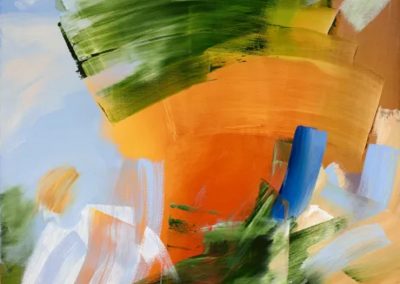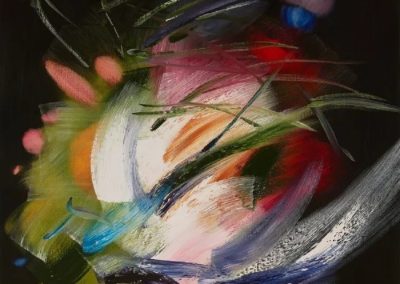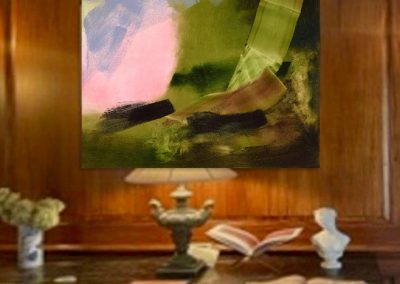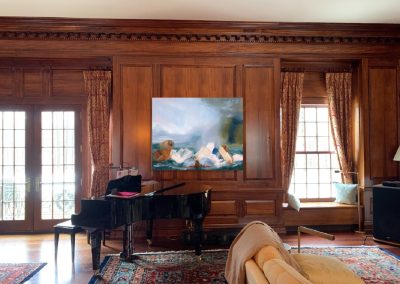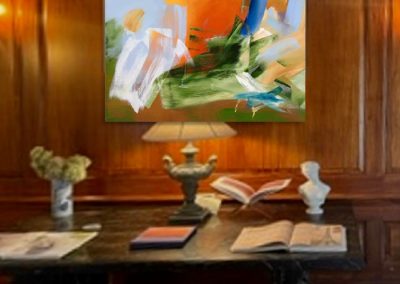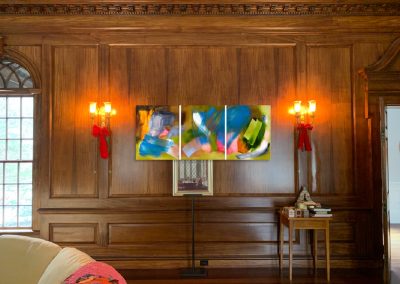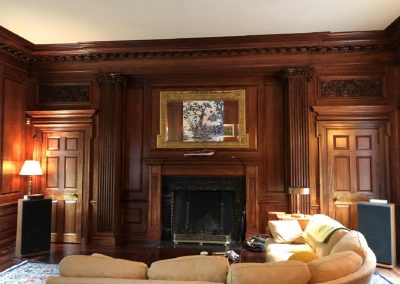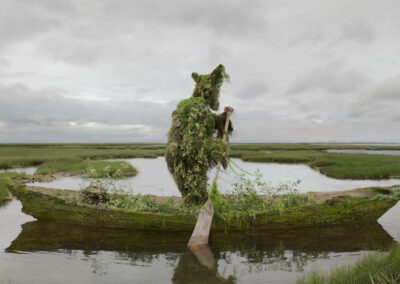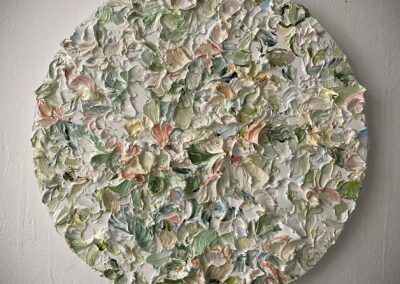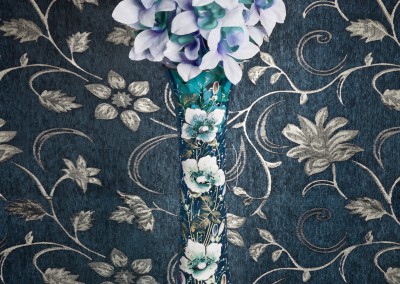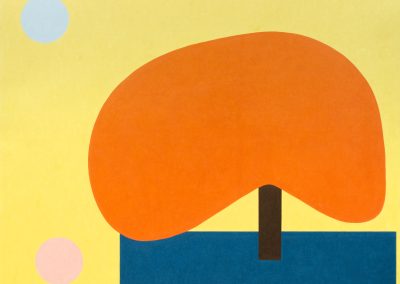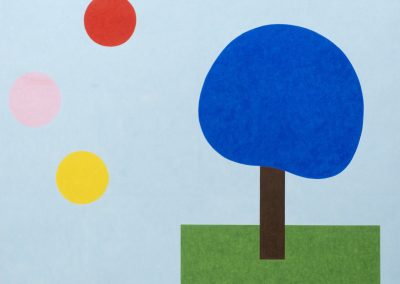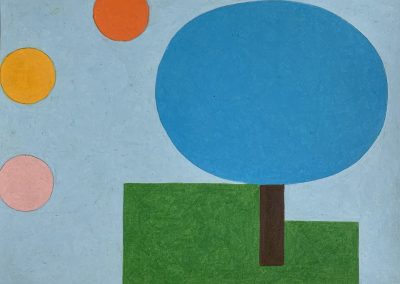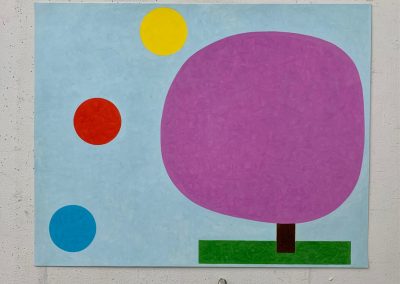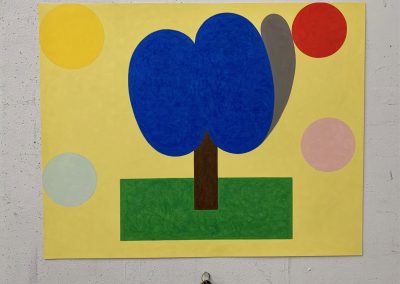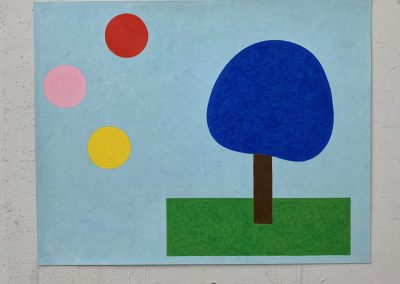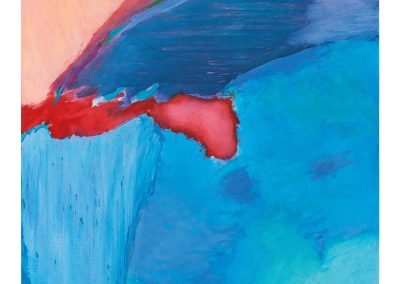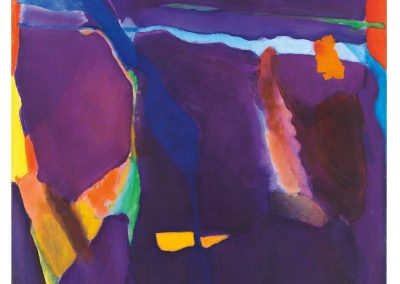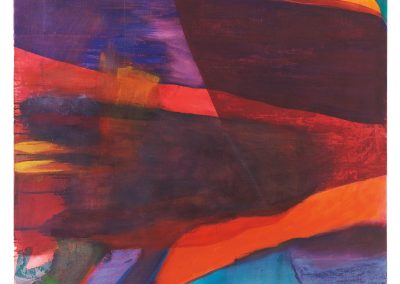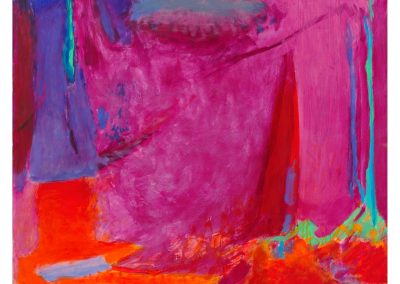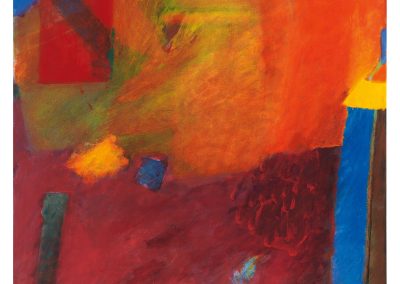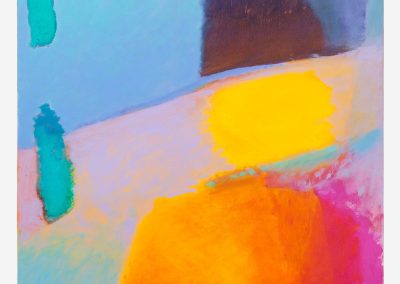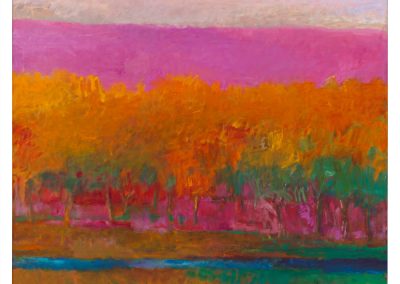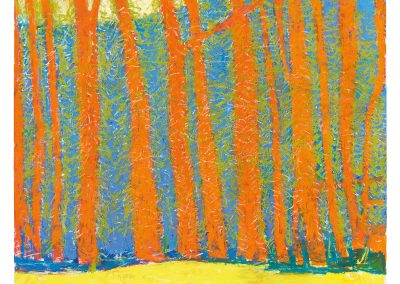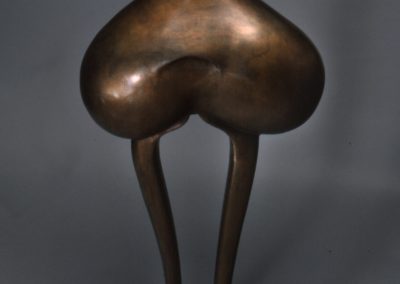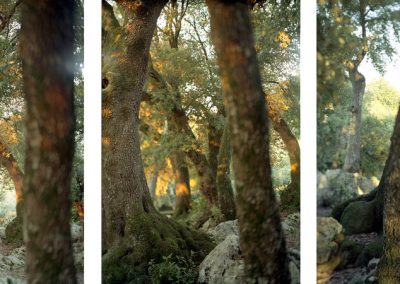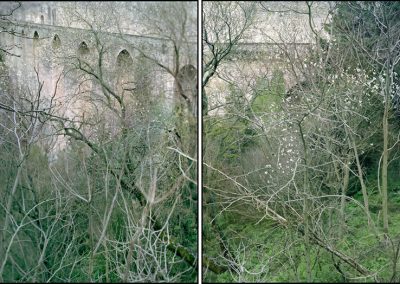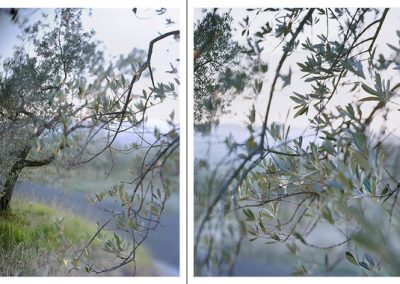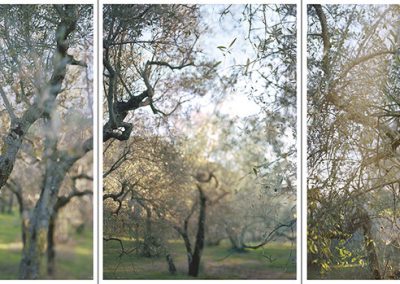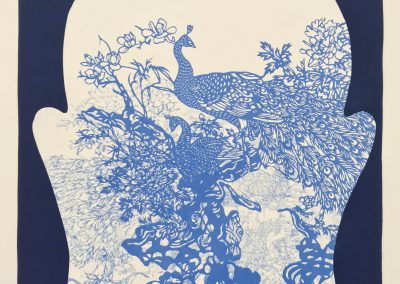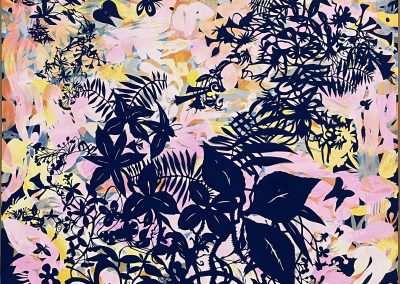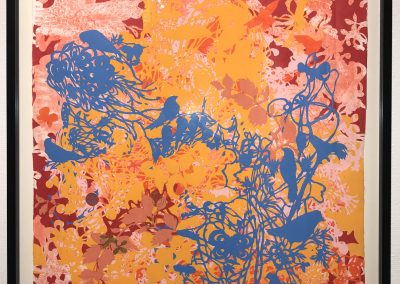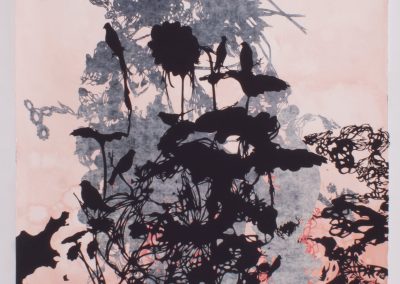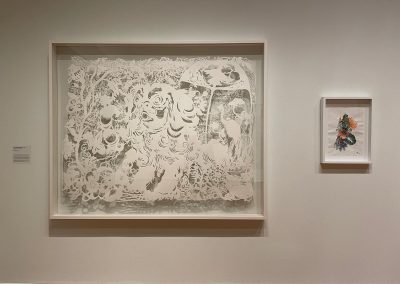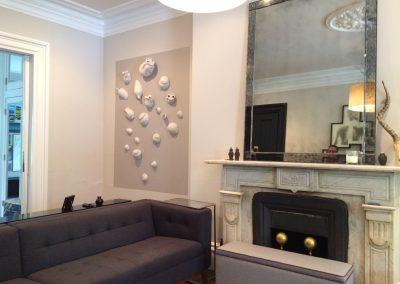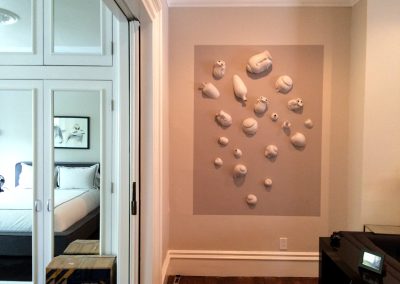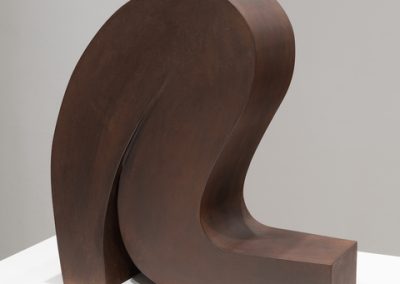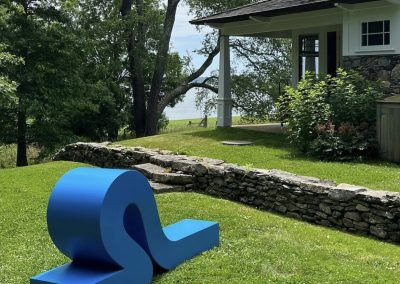Emmy and Brady
ELISE ANSEL
‘Diana’s Bow IV‘ Elise Ansel 44 x 50″ Oil on Linen, 2021 $24,500.00
‘Triumph of Venus II‘ Elise Ansel 44 x 50″ Oil on Linen, 2021 $24,500.00
‘Generosity’ Elise Ansel 60 x 48″ Oil on Linen $28,00.00
‘Radiant’ Elise Ansel 48 x 36″ Oil on Linen $20,000.00 these are retail prices before %%
ELISE ANSEL was born and raised in New York City. Ansel received a BA in Comparative Literature from Brown University in 1984. While at Brown, she studied art at both Brown and the Rhode Island School of Design. She worked briefly in the film industry before deciding to make painting her first order medium. Ansel has exhibited her work throughout the United States and in Europe. Her works are held in the permanent collections of the Museum of Contemporary Art in Krakow, the Bowdoin College Museum of Art and the Evansville Museum of Arts and Sciences. She is represented by galleries in New York, London, Connecticut, Santa Fe, and Detroit.
Using energetic gestural abstraction, Elise Ansel translates Old Master paintings into a contemporary pictorial language. She mines art historical imagery for color and form, setting aside the narrative and pictorial elements of these paintings and thus creating room for new interpretations. Her works interrupt linear readings of Old Master paintings, repurposing and highlighting the unexpected. The representational content is transformed into a celebration of color, gesture and the materiality of paint. In the process of reducing her inspirations to their most fundamental forms she retains their power and energy, replacing imagery with dynamic movement and dramatic color and light.
KAHN & SELESNICK
‘Voyage of the Greenman’ 15 x 77″ Color Photograph $6,500.00
‘Patrick, Wild Rose, Spider Monkey’ 16 x 9″ $2400.00
The full inventory of these round images is here: KAHN & SELESNICK (kahnselesnick.biz)
TESS MICHALIK
Entry – wall to the right of the entry/ passthrough to the breakfast room $4,500.00
ADRIAN FERNANDEZ
LEFT: ‘To Be or to Pretend‘ 31 x 21″ Color Photograph $4,600
RIGHT: ‘Untitled #24’ 39.5 X 26.25” $5,500
Adrián Fernández studied visual arts at the San Alejandro Fine Arts Academy (2004) and at the Superior Institute of Arts (2010) in Havana, Cuba. He works as an independent artist and as a professor of Documentary Photography for New York University, Tisch School of the Arts, Office of Special Programs Abroad. Early in his career he began to experiment with photographic media, in which he has developed much of his art, expanding his practice in recent years to three-dimensional installation and sculpture works. The metal structures found in his sculptures result from the combination of simple geometric figures that are interconnected giving shape to more complex volumes, which sometimes appear to be unfinished or abandoned constructions in the process of creation. His photography has developed from black-and-white with a documentary perspective to studio photography and the use of digital images with computer generated content. His work is inspired by the symbolic connection established between objects, belongings, architectural forms, images or fragments of the material world that inhabit and at the same time modulate people’s daily lives. He explores their impact on the shaping of personal memory, collective history and the creation of new cultural paradigms in contemporary society. Adrián Fernández has exhibited in group and solo shows in Cuba, United States, Mexico, Panama, France, Germany, Norway, Belgium and Switzerland. His work can be found in the collections of The Houston Museum of Fine Arts, 21C Museum Hotels, Perez Art Museum Miami, Jordan Schnitzer Museum of Art, Museo Nacional de Bellas Artes, La Habana.
DAVID X LEVINE
David X Levine was born in Boston, MA in 1962, and has been living in New York City since 1998. Levine’s vivid, labor-intensive colored pencil drawings range in size from the intimate to the monumental (10” to 10’). Mixing popular and high culture, Levine creates a formal vocabulary that inhabits subtle but lushly optical spaces, generating rich associations. All of the work has some kind of humor tempered with a profound seriousness.
EMILY MASON
When I start a picture I like to use the medium as directly as I can . . . [this] puts me in a state of mind which avoids pictorial constraints. I try to use paint for its brilliance, transparency, opacity, liquidity, weight, warmth and coolness. These qualities guide me in a process which will determine the climate of the picture. All the while I work to define spatial relationships, resulting in certain kinds of places. I cannot name them but know intuitively when they appear. — Emily Mason
Born and raised in New York City, Emily Mason’s art education began at home with her mother Alice Trumbull Mason, a founding member of the American Abstract Artists. A graduate of New York City’s High School of Music and Art, she attended Bennington College and the Cooper Union. In 1956 she was awarded a two-year Fulbright grant to paint in Venice, Italy. There she studied at the Accademia delle Belle Arti where she first experimented with blotting and transferring paint onto the surface of the canvas. Afterwards, Mason moved into her own studio in the Giudecca. During her time in Venice, she married the painter Wolf Kahn. They have two daughters, Cecily and Melany.
Mason has spent more than six decades exploring her distinctive vein of lyrical, luminous abstraction. Robert Berlind wrote in Art in America, “Mason works within the improvisational model of Abstract Expressionism, though notably without angst or bravado. Her oil on canvas paintings are distinguished by a sense of intriguing intimacy combined with uncompromising, though gentle, intensity. They evince a sense of structure within open, luminous space and juxtapose robust color harmonies with vivid contrasts that create an engaging optical vibration.”
Since her first solo show in 1960 at the Area Gallery, Mason has exhibited regularly in New York City. In 1979 she was awarded the Ranger Fund Purchase Prize by the National Academy. She taught painting at Hunter College for more than 25 years. Her work is included in numerous public and private collections.
In 2006, George Brazilier published Emily Mason: The Fifth Element, a comprehensive treatment of her work by David Ebony and Robert Berlind. In 2015, UPNE released her second monograph Emily Mason: A Light in Spring, featuring prints and paintings since 2005 and edited by Ani Boyajian with articles by David Ebony and Christina Weyl.
WOLF KAHN
Born in Stuttgart, Germany in 1927, Wolf Kahn fled Nazi Germany to Britain through the Kindertransport in the late 1930s. He eventually settled in the United States, where he completed high school and enrolled in the Navy. Following his service, he studied with the legendary teacher and Abstract Expressionist painter Hans Hofmann, eventually becoming his studio assistant. In 1950, he enrolled at the University of Chicago and completed his Bachelor of Arts degree within one year.
Kahn had his first solo exhibition at Hansa Gallery in New York City in 1953 and went on to be represented by Grace Borgenicht Gallery, where he exhibited regularly until 1995. He was the recipient of the Fulbright Scholarship, the John Simon Guggenheim Fellowship, the Award in Art from the American Academy of Arts and Letters, and the Medal of Arts from the State Department.
Kahn married the artist Emily Mason in 1957.Their marriage lasted sixty-two years until Emily’s death in December 2019, just a few months before his passing. The pair lived and worked between New York City and W. Brattleboro, Vermont.
Kahn’s work has been exhibited at galleries and museums throughout North America. His work is held in important museum collections including The Metropolitan Museum of Art, New York, NY; The Whitney Museum of American Art, New York, NY; The Museum of Modern Art, New York, NY; The Museum of Fine Arts, Boston, MA; The Hirshhorn Museum and Sculpture Garden; The Los Angeles County Museum of Art, Los Angeles, CA; and The Smithsonian American Art Museum, Washington, D.C.
BREON DUNIGAN
Entry – wall to the left of the front door as you leave the home, with flowers and plants
JOANN VERBURG
JoAnn Verburg (b.1950) received a BA in sociology from Ohio Wesleyan University and an MFA in Photography from the Rochester Institute of Technology. Distinguished by its extraordinary sensitivity to the energy and sensuality of the natural world, Verburg’s own photographic work combines exquisite color, varied focus, and thoughtful composition to convey the beauty of its subject and setting. Often exhibited as diptychs and triptychs, her evocative images of olive groves near her home in Spoleto, Italy, envelop the viewer in a serene and dreamlike atmosphere. For over thirty years, Verburg has returned to the landscapes around Spoleto with her husband, poet Jim Moore, to capture the fields and trees of the Italian countryside. Her photographs of Moore in this idyllic environment have been compared to Alfred Stieglitz’s portraits of Georgia O’Keefe, and Harry Callahan’s photographs of his wife Eleanor. In addition to landscape, still life, and portrait photography, Verburg has also worked on various installations and public art projects in Minneapolis and St. Paul, Minnesota. Her interest in collaboration has led her to work with theater artists Ping Chong, Robert Wilson, the Illusion Theater, choreographers Trisha Brown and Danielle Malusardi, and her husband, poet Jim Moore.
Verburg has exhibited her work extensively in the United States and around the world. Her solo exhibition, Present on the Road to Bazzano was held at the Minneapolis Institute of Arts in 2001, and Verburg was the subject of a mid-career survey at the Museum of Modern Art New York in 2007, Present Tense. Present Tense was exhibited at The Walker Art Center in 2008. Her work has also been featured in a number of group exhibitions at the International Center for Photography, New York (1988 and 1993); The Stroganov Palace, St Petersburg, Russia (1998); the Katonah Museum of Art, Katonah, New York (2000); the George Eastman House, Rochester, New York (2006); the Tehran Museum of Contemporary Art, Tehran, Iran (2007); and La Triennale di Milano (2018). She is the recipient of a Guggenheim Fellowship (1986), as well as fellowships from the Bush Foundation (1983 and 1993) and the McKnight Foundation (1994 and 2004). She was awarded a Rockefeller Foundation Residency at the Bellagio Conference and Study Center, Bellagio, Italy in 1998. She has held teaching positions at Yale University and the Minneapolis College of Art and Design and was an artist in residence at the Rhode Island School of Design.
Verburg’s work can be found in the permanent collections of the Los Angeles County Museum of Art, the Museum of Fine Arts, Houston, the Museum of Modern Art, New York, the National Portrait Gallery, Washington, D.C., the San Francisco Museum of Modern Art, the Whitney Museum of American Art, New York, and the Museum of Fine Arts, Boston.
FRED LIANG
Fred H.C. Liang received his BFA from the University of Manitoba and his MFA from Yale University. His honors include Massachusetts Cultural Council Arts Grants in both painting and works on paper. Liang’s work is in numerous public and private collections, including Fidelity, the Gund Collection, the Addison Gallery of American Art, and the Rose Art Museum. He has exhibited at the Addison Gallery of American Art, Milwaukee Art Museum, and the Chao Art Center in Beijing, and had solo exhibitions in Berlin, Germany; Jerez, Spain; and Beijing, China. He was awarded the Addison Gallery’s Edward E. Elson Artist-in-Residence program, a residency at Swatch Peace Art Hotel in Shanghai, and the Molten Capital Residency at the Museo de Arte Contemporanea De Chile. He is a professor and the printmaking coordinator at Massachusetts College of Art and Design in Boston, MA.
CARL DALVIA
Known for his hyper-textured sculptures in resin, bronze, and marble, D’Alvia explores the limits of traditional sculpture, making work that is at once minimal and maximal, humorous and tragic. For his “Liths” series, D’Alvia continues to explore sculptural dichotomies with monumental works in painted aluminum that appear both hard and soft; serious and funny; masculine and feminine. Drawing from ancient monoliths as well as 1970’s works by Tony Conrad, Elizabeth Murray, Alexander Calder, and John McCracken, D’Alvia looks at the concept of the statue or monument—a trope he simultaneously reveres and pokes fun at—with a contemporary lens. D’Alvia softens the severe form of the monolith, introducing playfulness and humor, bridging old traditions together with the new to point to the work’s heavy, serious, and darker qualities.


